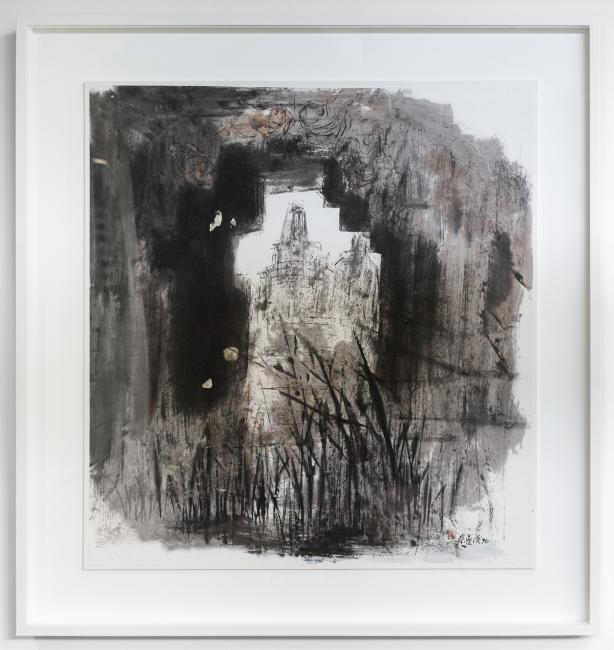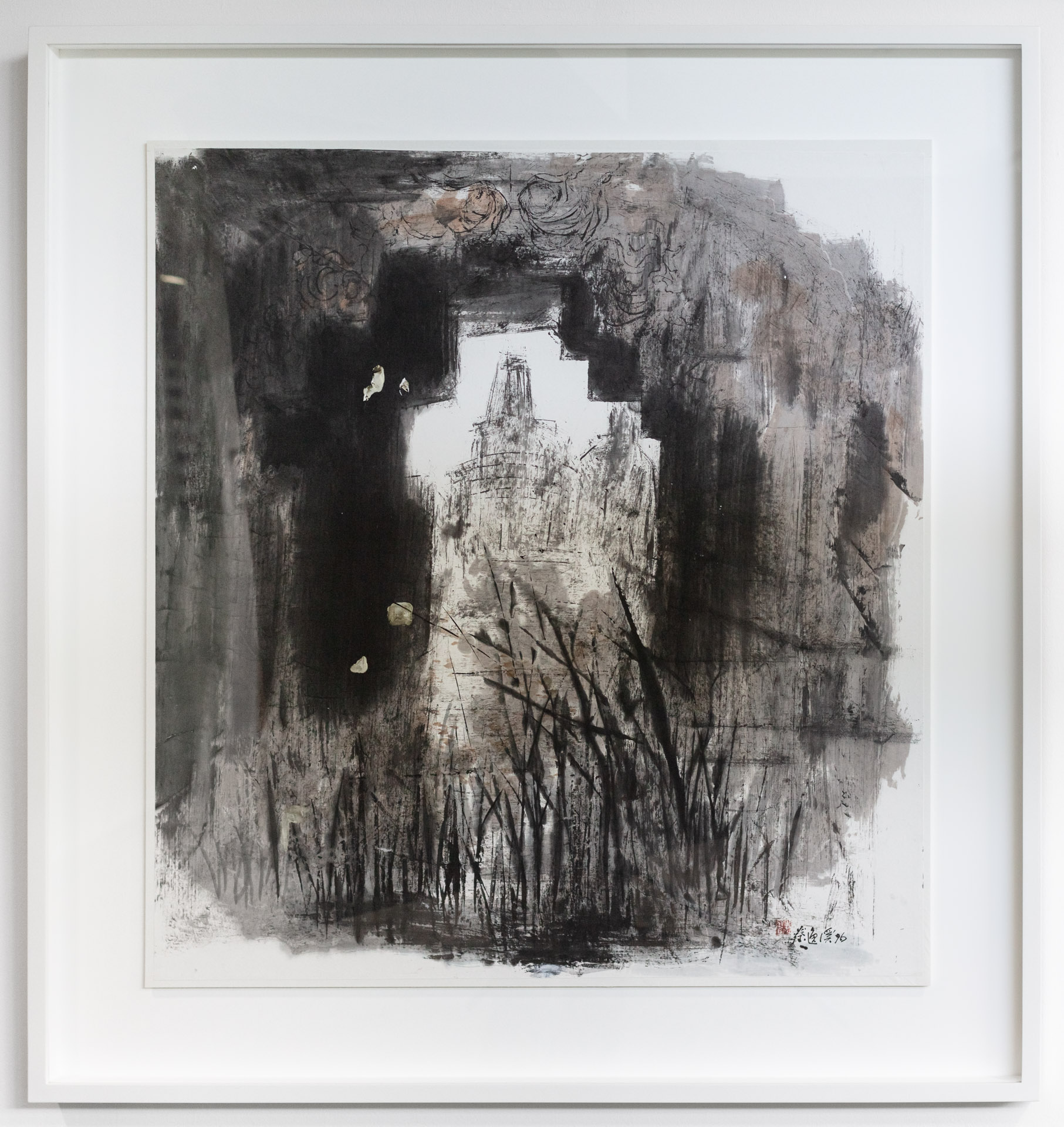Artwork Details
Moonlight at Borobudur
Credit Line: Gift of Artist 2006, Collection of SMU
Artist's Inscription:
远 涛
Chua Ek Kay (1947-2008) was one of Singapore's leading contemporary Chinese ink painters. Born in China, Chua came to Singapore with his family in the 1950s. Here he studied Chinese ink painting under Fan Chang Tien. In 1991, he was the first Chinese ink painter to win the United Overseas Bank Painting of the Year Award. He later took up formal training in contemporary art, receiving a Bachelor of Fine Arts from the University of Tasmania in 1994 and a Master of Arts (Honours) in Visual Arts from the University of Western Sydney in 1995. He was awarded the Cultural Medallion in 1999.
This artwork is from the Street Scenes Collection, a suite of 30 paintings donated by the artist in 2006 and currently housed at Lee Kong Chian School of Business. The Street Scenes Collection spans two decades of Chua's artistic practice, from 1986 to 2006, and pictures narrow alleyways, temples of worship, old shophouses and historic sites in Singapore, Kathmandu, Yogyakarta and Jiangnan. In later years, he was keener on evoking feelings rather than rendering actual physical architecture. Particularly, his depictions of Singapore city streets—from Little India to Ann Siang Hill—are suffused with feelings of melancholy as he captures history passing through the once-familiar streets he has seen grown, thrived, and waned over time.
Moonlight at Borobudur (1996) depicts Borobudur temple. Dating from the 8th and 9th centuries and located in Central Java, Indonesia, Borobudur temple is one of the greatest Buddhist monuments in the world. And is also the subject of a series of paintings by Singapore's contemporary Chinese ink painter Chua Ek Kay.
Chua earnestly grappled with how to define ink painting in a westernised and globalised milieu, and throughout his artistic career had always given critical considerations to the expressive forms and substance of both Chinese and Western art. That the ancient monument of Borobudur drew from two sources—Buddhism from India and the indigenous culture of Java—must have served as both an artistic and intellectual inspiration to the artist.

